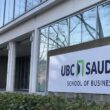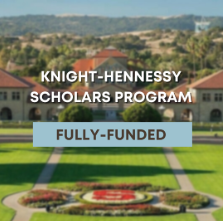Stanford University’s Knight-Hennessy Scholars program stands as one of the world’s most comprehensive graduate scholarship opportunities. This fully funded program attracts exceptional individuals from across the globe who demonstrate outstanding leadership potential and a genuine commitment to positive social impact.
For prospective applicants targeting the 2026 enrollment cycle, this detailed guide provides essential information about program benefits, eligibility requirements, application procedures, and strategies for developing a competitive submission.
Program Overview
Stanford launched the Knight-Hennessy Scholars initiative in 2016 with a clear mission: to cultivate a diverse community of future leaders equipped to address complex global challenges. The program honors Phil Knight, Nike’s co-founder, and John Hennessy, Stanford’s former president, both recognized for their transformative leadership.
The scholarship supports graduate study across all Stanford programs for up to three years. This includes master’s degrees, doctoral programs, professional degrees, and joint degree combinations across Stanford’s seven schools: Business, Earth Sciences, Education, Engineering, Humanities and Sciences, Law, and Medicine.
What distinguishes Knight-Hennessy from comparable programs extends beyond financial support. Scholars join an interdisciplinary community where a doctoral candidate in physics might collaborate with an MBA student, while someone pursuing environmental policy works alongside a medical researcher. This diversity creates unusual opportunities for cross-disciplinary innovation and lasting professional relationships.
Scholarship Benefits
The Knight-Hennessy Scholars program provides extensive financial coverage designed to eliminate economic barriers to graduate education at Stanford. Understanding exactly what receives funding helps prospective applicants make informed decisions.
Tuition Coverage: The program covers full tuition costs regardless of your chosen Stanford graduate program. Given that annual tuition at Stanford varies by program but typically ranges from $50,000 to $65,000, this represents substantial support over three years.
Living Stipend: Scholars receive a stipend calculated to cover reasonable living expenses in the Stanford area. The San Francisco Bay Area maintains high living costs compared to many regions, so this stipend proves essential for maintaining focus on academic work without financial stress.
Travel Allowance: The program provides funding for international scholars to return home annually. This proves particularly valuable for students from distant countries who might otherwise face difficult choices between family connections and financial constraints.
Additional Benefits: Beyond basic support, scholars access leadership development programming, networking opportunities with prominent leaders across sectors, and enrichment activities designed to broaden perspectives and build practical skills.
The program covers three years of funding. For doctoral students whose programs extend beyond this period, Stanford academic departments typically provide continued support through teaching assistantships, research positions, or departmental fellowships.
Core Selection Criteria
The Knight-Hennessy selection process evaluates candidates against three essential characteristics. Understanding these criteria thoroughly helps applicants present their experiences and aspirations effectively.
Independence of Thought
This quality reflects more than academic achievement or intelligence. The program seeks individuals who approach problems from fresh angles, question accepted solutions when evidence suggests better alternatives, and demonstrate intellectual courage in their pursuits.
Consider someone working in agricultural development who notices that standard irrigation recommendations consistently fail in certain regions. Rather than simply implementing established protocols, this person investigates why these methods underperform, discovers that local soil composition requires different approaches, and develops adapted solutions based on actual conditions rather than conventional wisdom.
Independence of thought appears in research that challenges existing theories, in projects that solve old problems through new methods, and in personal choices that reflect careful consideration rather than simply following expected paths.
Purposeful Leadership
The program defines leadership broadly, extending well beyond formal positions or titles. What matters is evidence that you have mobilized others toward meaningful objectives and created positive outcomes that would not have occurred otherwise.
Leadership manifests differently across contexts. Perhaps you organized fellow students to address a campus issue, successfully advocating for policy changes. Maybe you coordinated volunteers to provide educational support in underserved communities, building a sustainable program that continues serving students. You might have led a research team that made significant discoveries, or coached younger students to achievement in academic competitions.
The selection committee looks for leadership that produces tangible results, demonstrates ability to work with diverse groups, and reflects genuine commitment rather than resume building. Your leadership experiences should reveal something about how you approach challenges, how you inspire others, and what you can accomplish when you identify something worth doing.
Civic Mindedness
This criterion evaluates your commitment to contributing beyond personal advancement. The program seeks individuals who recognize responsibilities to their communities and demonstrate this through sustained action rather than merely stated intentions.
Civic mindedness often reveals itself through ongoing involvement in activities serving others. This might include teaching in schools lacking adequate resources, volunteering with healthcare organizations, working on environmental conservation projects, or using technical skills to support nonprofit organizations. The key involves genuine, sustained commitment over time rather than occasional volunteer activities selected primarily for their resume value.
The selection committee recognizes that civic engagement takes many forms across different contexts. What matters is demonstrable concern for others’ wellbeing and consistent effort to contribute positively to your community or society more broadly.
Eligibility Requirements
The Knight-Hennessy Scholars program maintains straightforward eligibility criteria, though competition for available positions remains intense.
Academic Requirement: You must apply for admission to a full-time Stanford graduate program beginning in September 2026. This includes any Stanford graduate degree: master’s programs, doctoral programs, professional degrees (MBA, JD, MD), or joint degrees combining multiple programs.
Timing Requirement: You must submit both your Knight-Hennessy application and your Stanford graduate program application during the same admission cycle. If you already hold admission to Stanford or plan to begin in a different year, you cannot apply for Knight-Hennessy funding for that enrollment.
No Restrictions on Background: The program welcomes applications regardless of nationality, age, undergraduate institution, or previous field of study. Whether you come directly from undergraduate education or bring years of professional experience, you remain eligible provided you meet the basic requirements.
Career Stage Flexibility: Successful scholars range from recent university graduates to established professionals pursuing career transitions or advancement. Some bring Rhodes or Marshall scholarships, others come from military service, while many arrive as accomplished researchers, entrepreneurs, or professionals seeking new directions.
Application Timeline
The Knight-Hennessy application follows a structured timeline that requires careful planning. Missing deadlines means waiting another full year, so understanding the schedule proves essential.
Application Opening: Applications for the 2026 cycle typically open in July or August 2025. The Knight-Hennessy website will announce exact dates several months in advance. Prospective applicants should monitor the official website beginning in early summer 2025 to avoid missing important announcements.
Application Deadline: The submission deadline generally falls in early October, approximately ten weeks after applications open. For the 2026 cycle, expect a deadline around October 10, 2025, though the official date will be confirmed when applications open.
Critical Coordination: You must also submit applications to your specific Stanford graduate program. Different programs maintain different deadlines. Some departments require applications by early December, while others set later deadlines. You must meet both the Knight-Hennessy deadline and your academic program deadline.
Review Period: After the October deadline, the selection committee begins evaluating applications. With several thousand applications competing for approximately 75-100 positions, this review process extends several months.
Finalist Interviews: Candidates advancing to final selection typically receive interview invitations in late winter. These interviews occur at Stanford over several days, with the program covering all travel expenses for invited candidates.
Final Decisions: The program announces final scholarship awards in spring, usually March or April. Selected scholars then confirm their enrollment and prepare to begin their Stanford programs in September 2026.
Application Requirements
The Knight-Hennessy application includes several distinct elements, each serving specific purposes in helping the selection committee understand your background, accomplishments, and potential.
Personal Statement Essays
The application requires multiple essays addressing specific prompts. These essays provide space to demonstrate independence of thought, purposeful leadership, and civic-mindedness through concrete examples from your experiences.
Recent application cycles have included prompts asking candidates to:
- Describe an experience where you challenged conventional approaches or thinking
- Explain your vision for the impact you hope to achieve in your field or community
- Reflect on experiences that shaped your sense of responsibility toward others
- Discuss your approach to leadership and provide specific examples
While exact prompts may vary, they consistently aim to understand your character, values, and potential contributions. Strong essays provide specific, detailed examples rather than general statements. Instead of claiming you want to address global challenges, describe a particular project where you worked on a specific problem and explain what you learned from that experience.
Letters of Recommendation
You will submit recommendation letters from individuals who know your work well and can provide specific insights about your abilities and character. Strong recommenders might include professors who supervised your research, work supervisors who observed your leadership, or mentors who guided your development.
Effective recommendation letters include concrete examples. A strong letter might describe a specific research project where you demonstrated creativity and persistence, detail how you mentored teammates or younger students, or explain the impact of an initiative you led. Generic letters that simply state you are “excellent” or “hard-working” without specific evidence carry less weight.
Academic Records
Your undergraduate transcripts and graduate transcripts, if applicable, demonstrate your academic capabilities. Strong academic performance matters, though it alone does not guarantee selection. The program seeks scholars who excel intellectually while also demonstrating the leadership and civic qualities described earlier.
Video Responses
The application includes a video component where you record brief responses to prompts. This format allows the selection committee to assess your communication skills and gain a sense of your personality beyond written materials.
Video prompts typically address your motivations, experiences, or perspectives on relevant issues. You receive limited time for each response, making clear, concise communication essential. Practice beforehand helps you feel comfortable speaking naturally, though overly scripted responses can seem artificial. Authenticity matters more than perfect polish.
Developing a Strategic Approach
Creating a strong Knight-Hennessy application requires thoughtful preparation and honest self-reflection. While no formula guarantees selection, certain approaches typically produce more compelling submissions.
Begin Early and Reflect Deeply
The essay prompts require serious consideration of your experiences, values, and aspirations. Rushing through responses rarely produces your strongest work. Start thinking about the prompts well before the deadline. Discuss your experiences with mentors, friends, or family members who can help you recognize the significance in experiences you might otherwise overlook.
Prioritize Substance Over Style
The selection committee evaluates what you have accomplished and learned, not impressive vocabulary or elaborate writing techniques. Clear, honest communication proves more effective than attempting to sound overly academic. Write naturally, then edit for clarity and precision.
Demonstrate Rather Than Declare
Anyone can claim leadership abilities or social commitment. Strong applications distinguish themselves through concrete evidence. When describing leadership, explain specifically what you did, what challenges you encountered, how you addressed them, and what resulted from your efforts. When discussing civic engagement, describe sustained actions over time rather than isolated volunteer activities.
Connect Your Plans to Stanford Specifically
The program wants to understand why you have chosen your particular Stanford program and how it connects to your broader goals. Research the faculty, courses, research centers, and resources at Stanford that align with your interests. Demonstrate thoughtful consideration of what you would do with this opportunity.
Create Narrative Coherence
Help the selection committee understand connections between your experiences and aspirations. How did your background shape what you care about? How do your graduate studies fit into your larger trajectory? What do you hope to accomplish after Stanford? These connections need not follow a perfectly straight line, but some coherent narrative about your path forward should emerge.
Address Challenges Honestly
Many strong candidates have faced significant obstacles, whether related to financial circumstances, political instability, health challenges, or other difficulties. If such experiences shaped your path, acknowledge them. Explaining how you navigated adversity can demonstrate resilience and maturity. However, avoid framing yourself as a victim or dwelling excessively on hardships in ways that overshadow your accomplishments and potential.
Maintain Your Authentic Voice
Feedback from others can improve clarity and catch errors, but excessive editing can strip away your distinctive voice. The selection committee wants to hear from you, not from a group of advisors who polished away everything that made your application unique. Use feedback to strengthen your submission while ensuring the final version sounds genuinely like you.
Common Application Weaknesses to Avoid
Understanding typical pitfalls helps you sidestep mistakes that weaken otherwise strong applications.
Generic or Vague Statements
Statements like “I want to make the world better” or “I am passionate about helping people” could describe almost any applicant. Specify which aspects of the world you want to change, which communities you want to serve, and why these particular issues matter to you. Vague applications blend together and fail to leave lasting impressions.
Lists Without Reflection
Your resume already catalogs your accomplishments. Essays should go deeper, exploring what you learned, how experiences shaped your thinking, why you made particular choices, and how everything connects. The selection committee wants to understand not just what you accomplished but who you are and how you approach challenges.
Inauthentic Self-Presentation
Trying to present yourself as someone you imagine the program wants rather than who you actually are typically backfires. Experienced reviewers recognize inauthentic presentations. The program succeeds through diverse individuals with different strengths, not through everyone fitting a single template.
Neglecting Civic Mindedness
Some applicants focus entirely on academic achievements or career ambitions without demonstrating genuine commitment to contributing beyond personal success. This program specifically seeks people who will use their education and abilities to benefit others. Applications that lack clear evidence of this commitment struggle in selection.
Weak Recommendation Letters
Letters from prominent individuals who barely know you prove less valuable than letters from people who know your work intimately and can provide detailed, specific examples of your abilities. Choose recommenders based on how well they can speak to your qualifications, not based on their titles or institutional affiliations.
Careless Errors
Spelling mistakes, grammatical errors, or essays that do not directly address the questions signal lack of attention to detail. Have multiple people review everything before submission. These errors are completely preventable and create unnecessarily negative impressions.
Addressing Common Questions
Can I apply if I am already admitted to Stanford? No. The Knight-Hennessy application must be submitted during the same cycle as your Stanford graduate program application. If you already hold admission or have enrolled, you cannot apply for Knight-Hennessy funding for that particular program.
Must I submit separate applications? Yes. You complete both the Knight-Hennessy application and your Stanford graduate program application. These are distinct processes with potentially different deadlines. Your Stanford program makes admission decisions first, then the Knight-Hennessy committee considers admitted students for scholarship funding.
How many applicants compete for positions? The program typically receives several thousand applications annually and selects approximately 75-100 new scholars. This results in acceptance rates under 5%, though exact numbers vary by year depending on applicant quality and available funding.
Does applying affect Stanford admission chances? No. Stanford graduate programs make admission decisions independently based on academic qualifications. Applying for Knight-Hennessy neither helps nor hurts your admission chances. However, you must receive Stanford admission before the Knight-Hennessy selection becomes possible.
What happens if my program exceeds three years? Knight-Hennessy funding covers up to three years. If your program extends beyond this, your academic department typically provides continued funding through teaching assistantships, research positions, or departmental fellowships. This is standard practice for doctoral students.
Can I work while receiving the scholarship? The scholarship allows you to focus on studies without outside employment. Some programs include assistantships or research positions as part of academic training, which is acceptable. However, taking additional work primarily for income is not encouraged and might prove incompatible with your program’s demands and Knight-Hennessy community expectations.
Are there post-graduation obligations? Unlike some scholarships requiring specific post-graduation employment, Knight-Hennessy has no such requirements. The expectation is that you will use your education to contribute positively to society, but how you do this remains your choice. Scholars pursue diverse paths, including academia, business, nonprofits, government, and entrepreneurship.
To apply for he program, follow the link below and follow the process carefully





